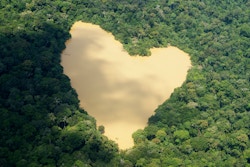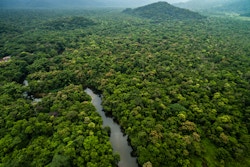Southeast Asia and Oceania: Biological hotspots
The islands of Borneo and New Guinea rank among Earth’s biological hotspots. Once connected to a vast green continent, they now stand solitary. Still wild lush and dense, for now. The threats facing the last contiguous rainforests in Southeast Asia and Oceania are immense. Can we stop the destruction before it is too late?

BIODIVERSE: Lush, biodiverse and mountainous rainforest in Papua New-Guinea. Photo: Rainforest Foundation Norway
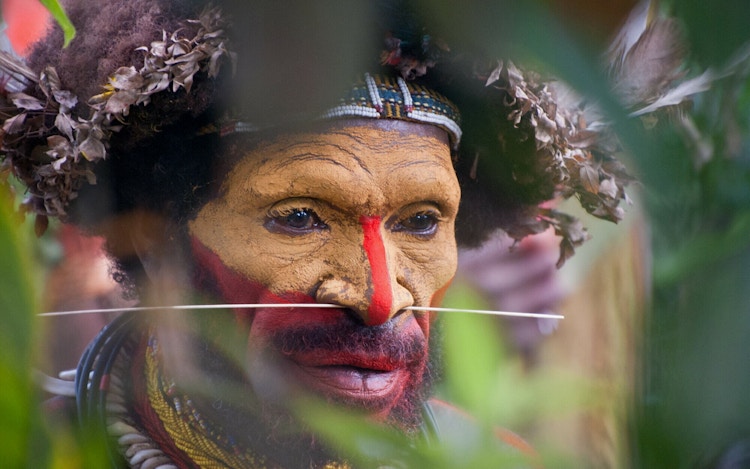
A man of the Indigenous Huli tribe from the highlands of Papua New Guinea is preparing for a traditional ceremony.
Photo: Jan Hasselberg
A home.
The rainforests of Southeast Asia and Oceania sustain more people who depend on them than any other rainforests on Earth.
Many of them are indigenous.
Photo: Anja Lillegraven/RFN

A biological treasure trove.
Rainforests in Indonesia cover 1% of the world’s landmass, but host up to 17% of all known species of animals and plants.
Such as the amazing orangutans, sharing 97% of human DNA.
Photo: Thomas Marent

Endemic species.
On the island of New Guinea alone, an unusually high number of species is found nowhere else on earth – a rare density.
Such as this colorful bird-of-paradise.

A cure for diseases. 70% of cancer medicines with active ingredients derived from plants come from plants that are found only in the rainforest.
Perhaps the key ingredient for the next pandemic vaccine lies hidden in a tree in Borneo or an insect in New Guinea?
Photo: Thomas Marent

A key to solving the nature and climate crises.
To our common future across the globe.
Photo: Thomas Marent

New Guinea, an island shared by Indonesia in the west and Papua New Guinea in the east, hosts around 250.000 square kilometers of intact, untouched rainforest. It is the third largest rainforest in the world – after the mighty Amazon and the Congo Basin. The Borneo rainforest covers close to 420.000 square kilometres, and is one of the world’s oldest, more than 100 million years.
After three decades in the region, this is now the focus of our efforts.
Once, lush rainforests stretched across nearly all land in Southeast Asia and Oceania. Over time, human activity has chipped away at this natural abundance, leaving only fragments behind in many areas. Today, large, contiguous forests remain mainly on the islands of Borneo and New Guinea.
State of the rainforests in Asia* and Oceania:
* About 90% of Asian rainforests are situated in Southeast Asia
Source: State of the Rainforest, 2020
They are being destroyed at alarming rates – threatening to ruin their ability to regenerate.
We are reaching a tipping point.
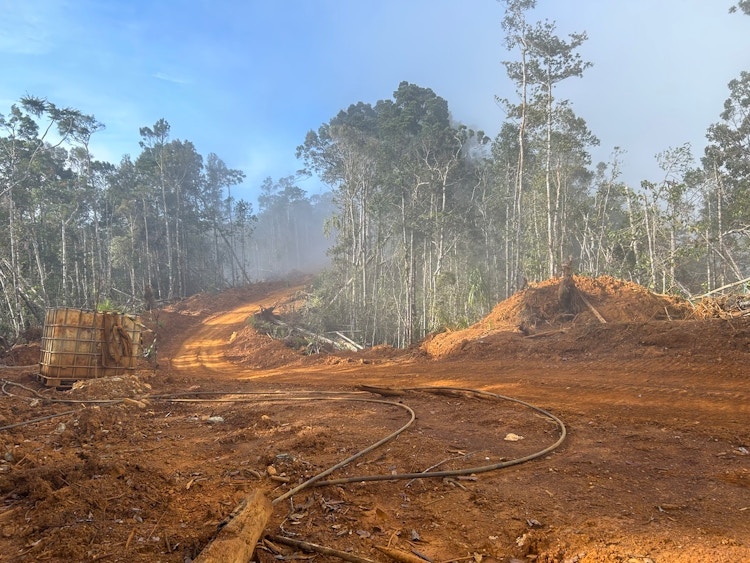
MINING: An access road to a nickel mine on the Indonesian island of Halmahera. Photo: Forest Watch Indonesia
Threats to rainforests: An economy of destruction
The rainforests in Southeast Asia and Oceania are being choked by an economy that is devouring its resources:
In Indonesia, the main threats are:
- Palm oil production
- Mining for minerals
- Usustainable legal and illegal logging
- Paper pulp production
- Infrastructure projects
In Papua New Guinea, the main threats are:
- Unsustainable legal and illegal logging
- Mining for minerals
- Land-use changes
- Agricultural expansion
These pressures are exacerbated by systemic corruption, lack and transparency and weak enforcement of environmental laws and regulations.




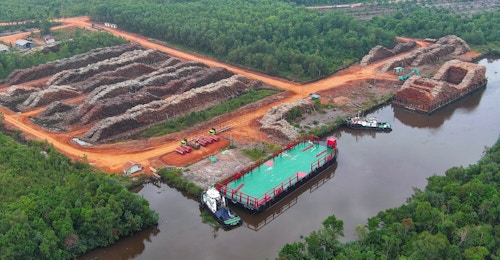
PALM OIL: Elephants walking through rainforest being cleared for a palm oil plantation in Borneo, Indonesia. Photo: Rainforest Foundation Norway. MINING: A nickel mine on the Indonesian island of Halmahera. Photo: Forest Watch Indonesia. TIMBER: Logging in Papua New Guinea. Photo: Greenpeace. INFRASTRUCTURE: The Trans-Papua highway opens access to previously remote rainforest areas. Photo: Shutterstock. PAPER PULP: Plantation timber being loaded onto barges in Borneo, Indonesia. Photo: Rudiant Axer/Shutterstock

VAST PLANTATIONS: Palm oil trees as far as the eye can see in Borneo, Indonesia. Photo: Rainforest Foundation Norway
Palm oil production
Indonesia is the world’s largest producer of palm oil, supplying almost two-thirds of global production. Over decades, vast tracts of rainforest have been cleared, often illegally, to make way for plantations.
The use of the versatile and cheap oil has skyrocketed across the globe and accounts for at least a third of all vegetable oil consumed. According to the OECD-FAO Agricultural Outlook 2025–2034, production in Indonesia is on the rise.

ROUND LOGS: Papua New Guinea is among the world’s largest exporters of round logs. Photo: Rainforest Foundation Norway
Logging by foreign actors
In Papua New Guinea too, palm oil is an emerging threat to forests, but the primary driver of deforestation continues to be illegal and unsustainable logging.
The sector is largely controlled by foreign companies, especially from Malaysia, with most of the timber, often illegally logged, is exported to China.
Size matters
Human activity does not just make the rainforests shrink.
Infrastructure and roads, logging, mining and agriculture fragment them into isolated patches.
That is a threat in itself.
The size of the rainforest is directly related to its ability to maintain ecological balance, support biodiversity and provide life-sustaining ecosystem services.
If we lose the last contiguous rainforests, we lose the fight against climate change and biodiversity loss.

That is why Rainforest Foundation Norway focuses on the three largest, contiguous rainforests left on the planet – in South America, Central Africa and Southeast Asia & Oceania.
Photo: Rainforest Foundation Norway
How we work - promoting structural change
We have worked in Southeast Asia and Oceania since 1997, focusing on shifting the structures that threaten forests and people.
Today, we work along four pathways:
- Securing land rights for indigenous peoples
- Creating political change
- Making businesses sustainable
- Working with local communities to develop a sustainable forest economy.
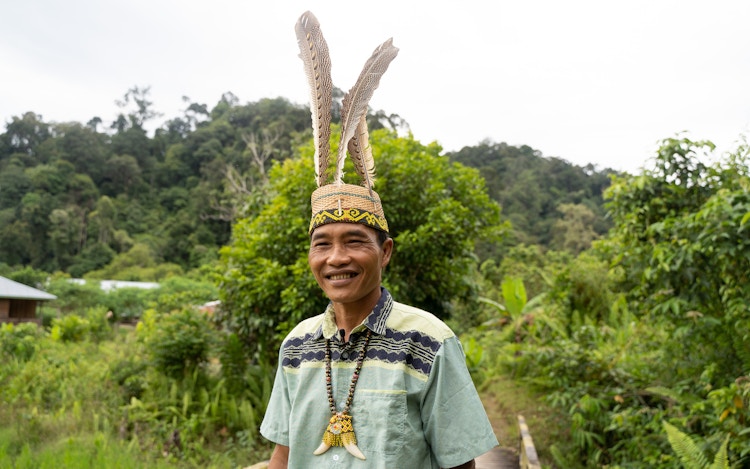
Defending forests means defending the people who live with and protect them.
It is about conservation, but also justice, culture, and identity.
Photo: Jon Dalsnes Storsæter/RFN
Rights-based protection
Recognition of Indigenous peoples’ rights to their traditional lands is proven to be extremely effective in protecting the rainforest.
Rainforest Foundation Norway is one of the world’s leading organizations in the field of rights-based rainforest protection.
We work closely with local civil society partners across Southeast Asia and Papua New Guinea.

CELEBRATING RESULTS: Local Indigenous leaders celebrating the establishment of the Managalas Conservation Area in Papua New Guinea in 2017. Photo: Morten Høy/RFN



